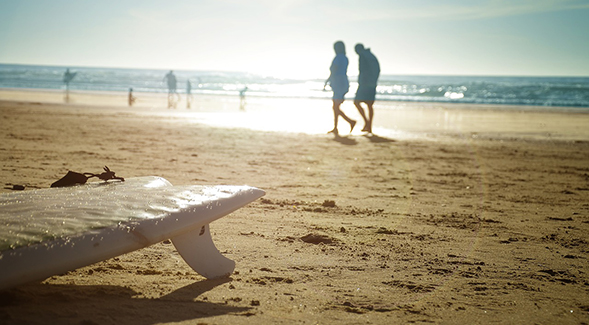Project Launching to Remove Tobacco Product Waste from San Diego Beaches, Parks
The team will collect and document tobacco pollution to create maps and statistical models in an effort to better understand the distribution of waste and develop solutions to combat the problem.

San Diegans may soon see teams in orange safety vests collecting and documenting harmful tobacco waste across the county, including parks and beaches.
The effort is part of the new countywide Tobacco Product Waste Reduction Project launched by researchers at San Diego State University.
The project is designed to actively work with local communities and governments to address tobacco product waste and create lasting solutions to protect neighborhoods from exposure to tobacco-related pollution.
“The most littered item in U.S. neighborhoods, retail areas, and recreation areas is discarded cigarette filters, which are made out of plastic and contain toxic residue from tobacco smoke,” said Georg Matt, a psychology professor and lead researcher on the project. “Add to this the hazardous waste from cartridges, batteries, and circuit boards of discarded electronic cigarettes, and it is clear that tobacco product waste significantly contributes to land, coastal, and water pollution.”
Beginning in July, Matt said staff members will begin working with communities to count, measure and collect tobacco product waste in eight designated cities within San Diego County.
Teams will use app-based GPS programs to accurately and safely identify, photograph and collect harmful waste. Visits to randomly selected census blocks for collections will begin in the City of San Diego, then expand to Carlsbad, Chula Vista, El Cajon, Escondido, Oceanside, San Marcos and Vista. All eight cities are part of the U.S. Centers for Disease Control and Prevention’s 500 Cities Project, currently known as the PLACES Project.
According to Matt, following the approximately year-long collection and documentation process, the SDSU team of researchers will create maps and examine statistical models to describe the distribution of waste and explore reasons for the observed patterns in an effort to seek solutions.
The project kicked off June 24 with a celebration event at Liberty Station NTC Park. SDSU researchers, local elected officials and their staff, representatives from the local Surfrider Foundation and members of the Sierra Club attended.
"As a representative of a district that’s home to some of our city’s postcard-perfect beaches, we know firsthand what’s often the most common items left behind,” said San Diego City Council President Dr. Jennifer Campbell. “However, the problem of waste from tobacco and vaping products extends well beyond our beaches and something must be done to address it."
Thomas Novotny, Professor Emeritus of Public Health at SDSU and CEO of the nonprofit Cigarette Butt Pollution Project, is a co-investigator on the project. After decades of research on the health consequences of tobacco use, he now focuses on the overall environmental impacts of tobacco waste.
“Aside from being the most frequently collected item of trash in the environment, this waste has significant direct and indirect economic costs to communities,” said Novotny. “It is not only a nuisance but also costs businesses and voluntary groups money and time to clean up and manage.”
To the project leads, this is just the beginning and far from enough to address the tobacco waste problem.
“Tasking our municipalities and beach cleanup volunteers with last ditch efforts to pick up millions of littered toxic plastic butts is not sustainable,” said Lori Mendez of the local Surfrider Foundation. “For a truly sustainable solution, we must go upstream, and tackle the problem at its origin.”
More information about the Tobacco Product Waste Reduction Project is available online.
This study is funded by California’s Tobacco-Related Disease Research Program.



